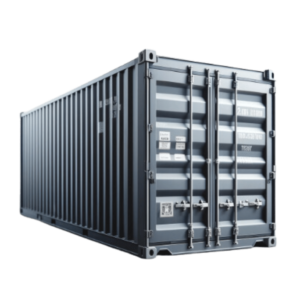40 ft Shipping/Storage Containers
Description
Types
- Standard (Dry Van): The most common type, designed for general cargo.
- High Cube: Offers an extra foot of height for taller items.
- Open Top: Has a removable roof for loading exceptionally tall cargo.
- Flat Rack: Collapsible sides and ends for oversized loads.
- Refrigerated (Reefer): Temperature-controlled for perishable goods.
Key Specifications (Standard 40 ft Container)
External Dimensions
- Length: 40 feet (12.192 meters)
- Width: 8 feet (2.438 meters)
- Height: 8 feet 6 inches (2.591 meters)
Internal Dimensions
- Length: 39 feet 5 inches (12.03 meters)
- Width: 7 feet 8 inches (2.34 meters)
- Height: 7 feet 10 inches (2.39 meters)
Weight
- Tare Weight (Empty): Approx. 8,000 lbs (3,750 kg)
- Gross Weight (Max): Approx. 67,200 lbs (30,480 kg)
- Payload (Max): Approx. 59,200 lbs (26,730 kg)
Capacity
- Internal Volume: 67.6 cubic meters (2,385 cubic feet)
Construction
- Walls, Roof, Floor: Corrugated steel
- Floor: Marine-grade plywood
- Corner Castings: ISO standard for stacking and securing
Doors
- Standard: One end with double cargo doors
Important Notes:
- Variations: Some containers might slightly differ in dimensions or features
- Condition: Specifications like tare weight change depending on the condition of the container (new, used, etc.).
- Special Types: Specifications differ significantly for open top, flat rack, reefer, and other specialized types of 40 ft containers.
Where to Find More Details
- Manufacturer Websites: Look for specific container model data sheets.
- Shipping Container Sales Companies: Their websites often have detailed listings.
- ISO Standards: The International Organization for Standardization (ISO) sets the standards for shipping containers.




Dan –
Yes.